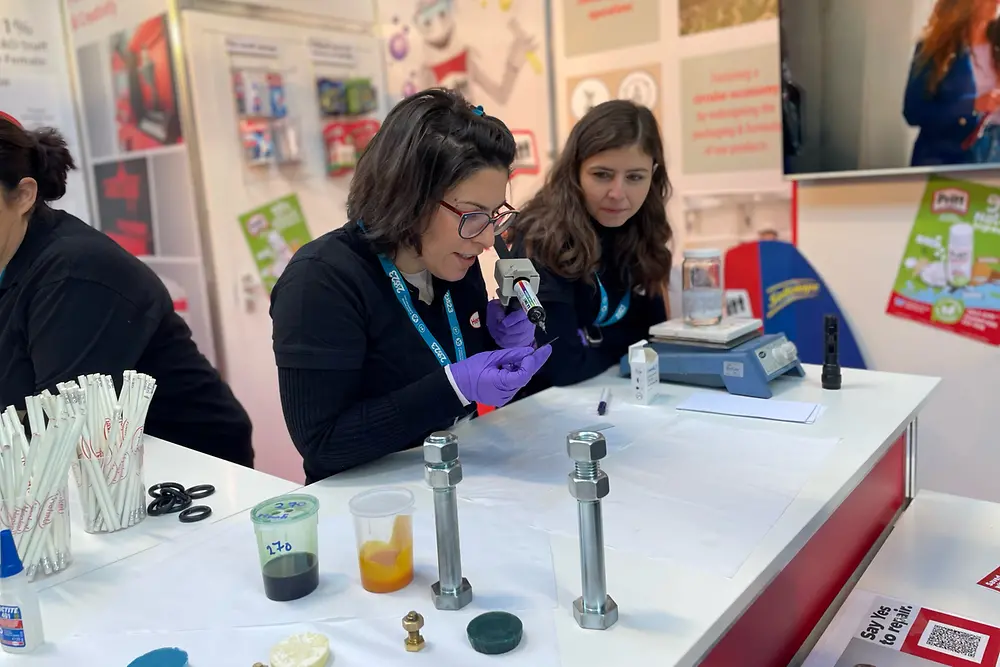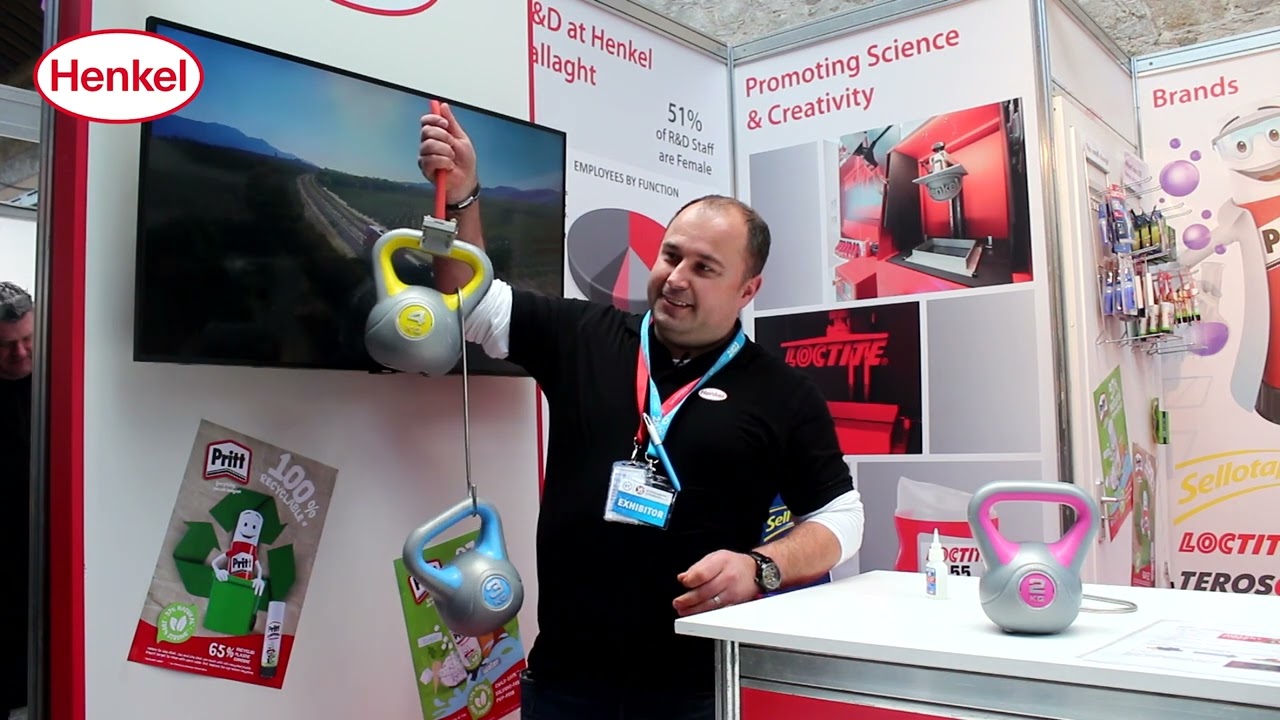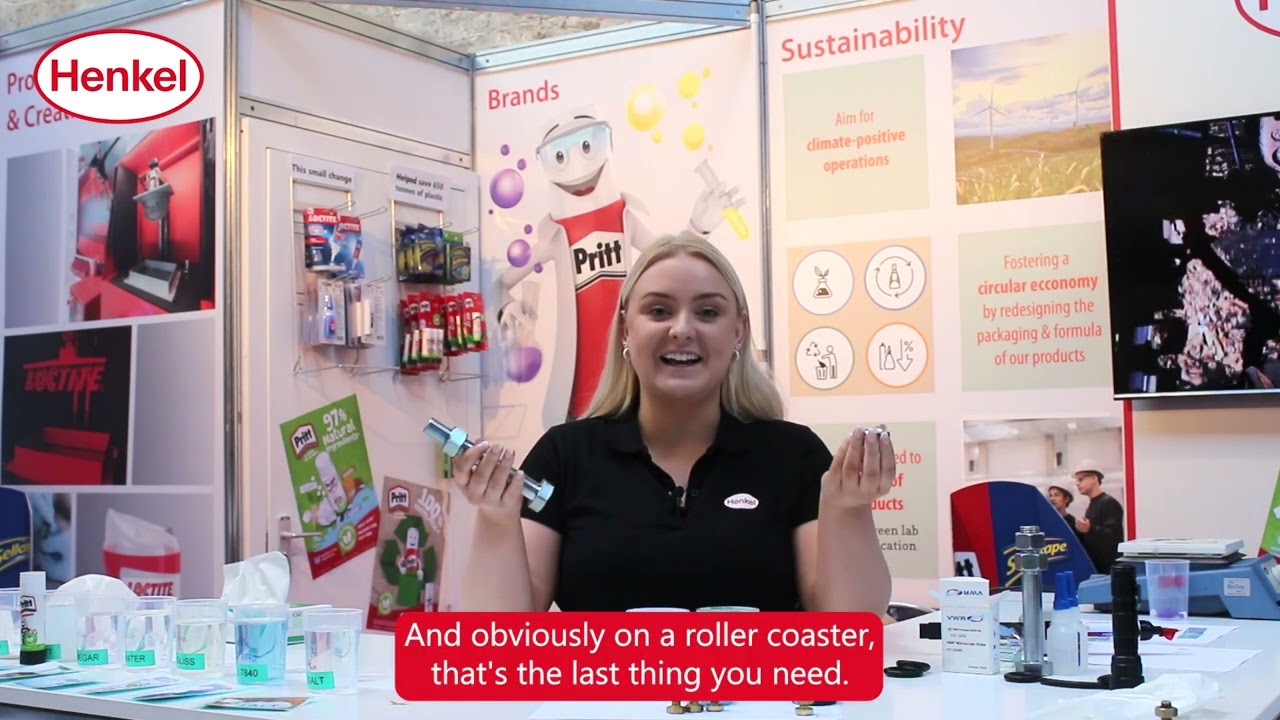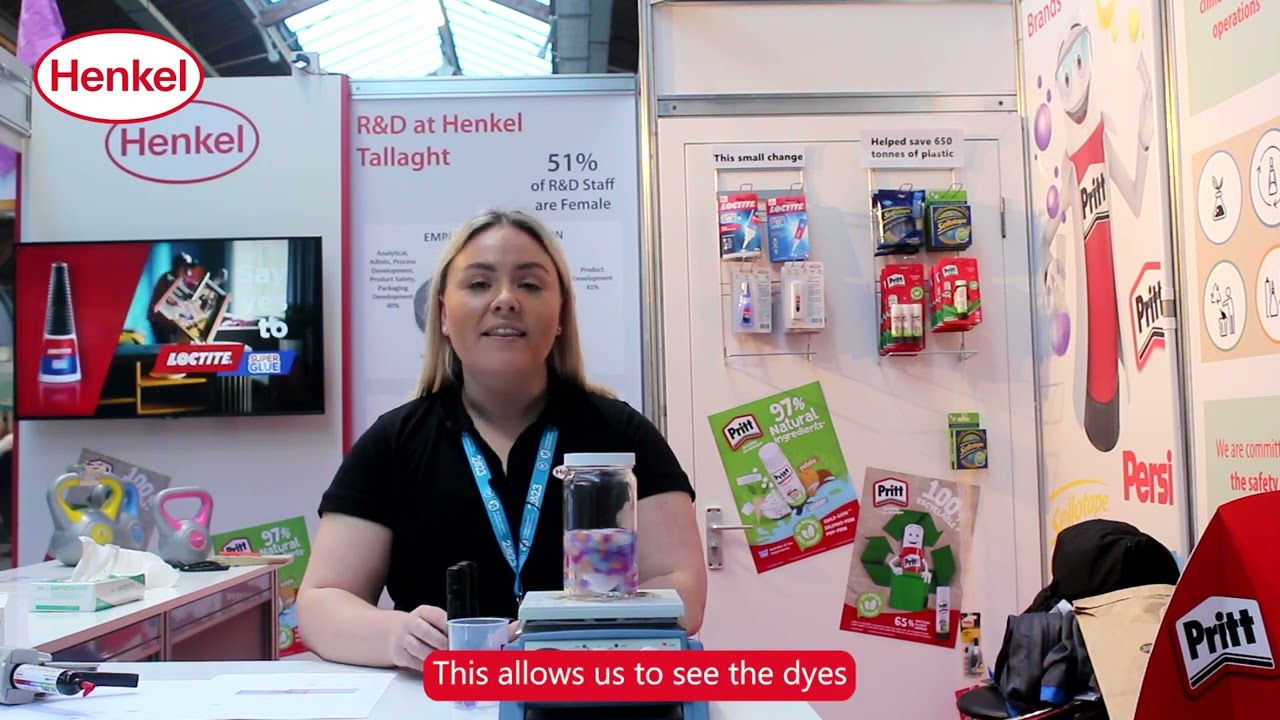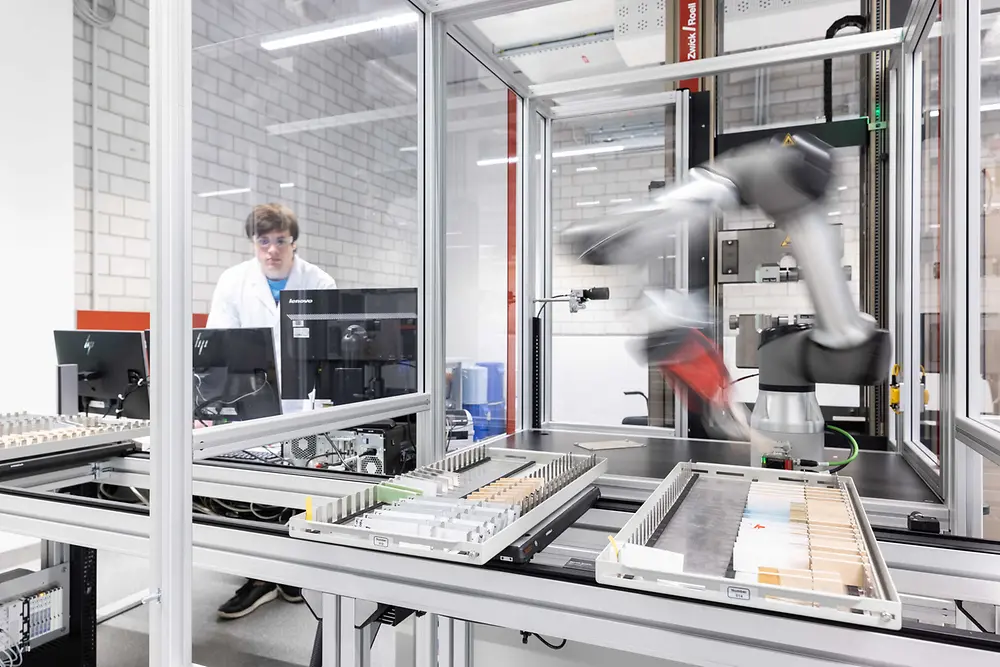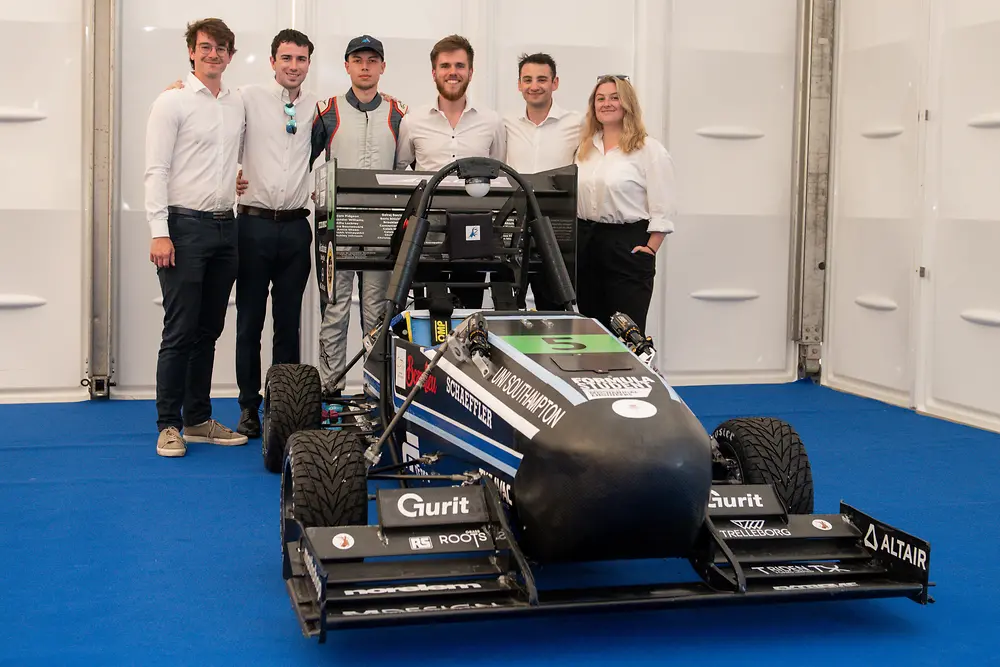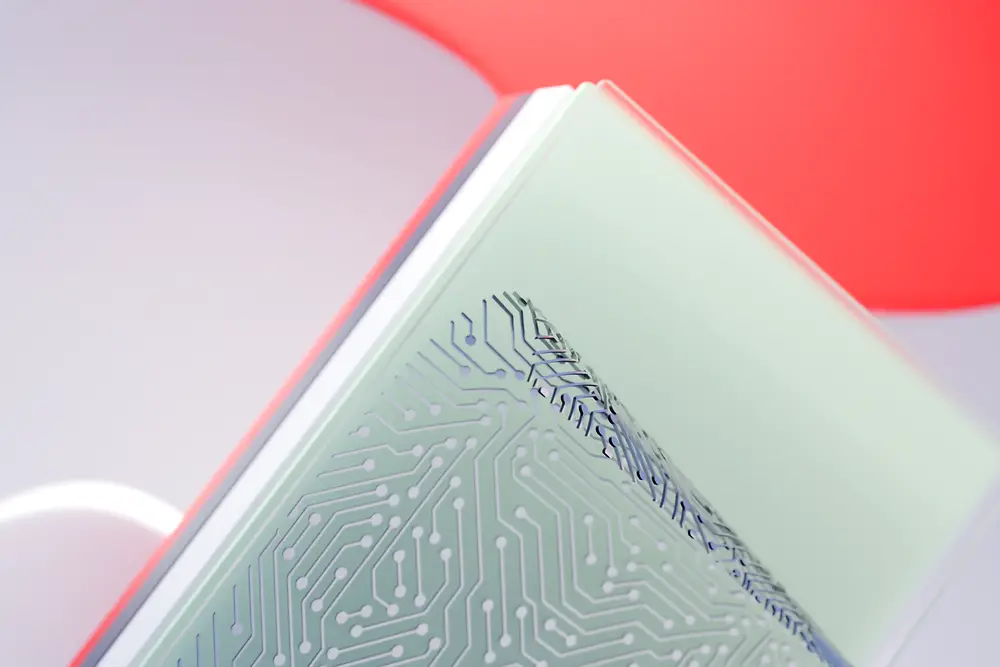Learn more about Henkel Brands & Businesses in UK & Irelands: Includes useful information about the brands, technologies and latest innovations in our business areas: Henkel Adhesive Technologies and Henkel Consumer Brands.
Henkel at the BT Young Scientists & Technology Exhibition Ireland
The principal objective of the BT Young Scientist is to enhance young people’s interest and engagement in the crucial subjects of science, technology, engineering and maths (STEM). The event attracts around 50,000 visitors each year and is targeted at students between the ages of 12 and 19, giving these age groups the opportunity to showcase their own science and technology acumen.
For the exhibition itself, students submit projects – either in groups or individually – and can choose between categories: Technology; Biological & Ecological; Social & Behavioural Sciences; or Chemical, Physical & Mathematical Sciences. 550 projects were submitted this year from over 1,100 students.
The event was officially opened by President Michael D Higgins who stated he has “faith in your ability, our young Irish scientists, to locate your gifts, your brilliance, in a moral context, to be willing to work for the benefit of all humanity beyond any well-earned personal reward.”
After three days of students showcasing their projects to judges, Shane O’Connor and Liam Carew from The Abbey School in Tipperary were announced the winners of the 59th BT Young Scientist. The title of the winning project was ‘Assessing the impact of second-level education on key aspects of adolescents’. The two students received a cheque worth €7,500 along with the chance to represent Ireland at the European Union Contest for Young Scientists in Brussels in September.
This event gave Henkel scientists the chance to show off their scientific finesse as they impressed visitors with an array of interesting and engaging experiments. The whole team were very enthusiastic and spent time explaining the science behind the experiments, along with talking about the company’s commitment to sustainability.
Pritt stick was a great example of Henkel’s move towards sustainable raw materials and packaging, and created many engaging conversations. Visitors to the stand were asked what they thought Pritt was made of and were surprised to hear it’s made of 97% natural materials - potato starch, water and sugar. This led to opportunities to show how the packaging on well-known brands such as Pritt, Loctite and Sellotape have become more sustainable by changing from plastic blister packs to cardboard ones, this will eventually save in the region of 1,000T of plastic per annum.
Visitors were also able to scan a QR code, which took them to a ‘Product Adviser’ and ‘Fix Stuff’ websites to encourage repairs and reusing broken household items including broken shoes, crockery, clothes, toys and many more items.
“The BT Young Scientist Exhibition and our company’s involvement at it is always a brilliant way to mark the beginning of the new year”, said Nigel Fay, Corporate VP Adhesive Technologies & Head of Innovation & Application Engineering. “Henkel views this event as a way to have a positive influence on the community and to help young students gain a wider understanding of science as a whole. Our Tallaght-based team love having a stand at the event and being able to showcase their knowledge to the rising science stars of this generation. This year we focused on sustainability and the importance of household repair to restore items rather than discard them while highlighting Henkel’s move toward more sustainable product packaging and renewable raw materials.”
Henkel showcased many different experiments, including:
Five-second Loctite glue kettlebell challenge
The team demonstrated the combined strength and speed of Loctite Superglue by holding a weight of 9kg, with only a single drop of glue.
pH Testing
Using pH paper, the differences in acidity/alkalinity of common Henkel household products were shown, such as Schwarzkopf shampoos, a solution of Pritt Stick and Bloo cleaners!
Photochromic beads
When photochromic beads were irradiated with UV light for a few seconds, they changed colour before people’s eyes.
UV-curing adhesive
The demonstrators amazed crowds as they glued glass slides together instantly, using only a flash of light from a UV torch.
Nut & Bolt Demo
When 2 parts, such as a nut and bolt are fastened together - under high vibration, the nut can eventually shake loose. The power of Loctite Thread lockers was on display, keeping the nut firmly in place.
Watch a few of the experiments conducted below.





